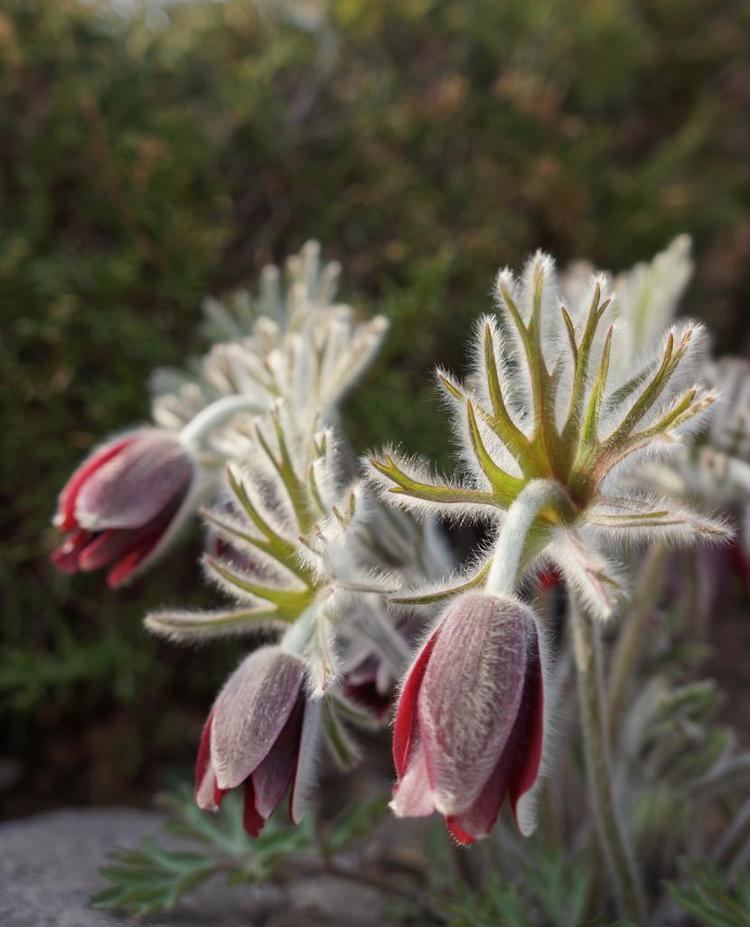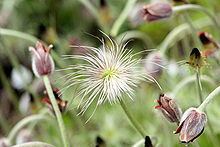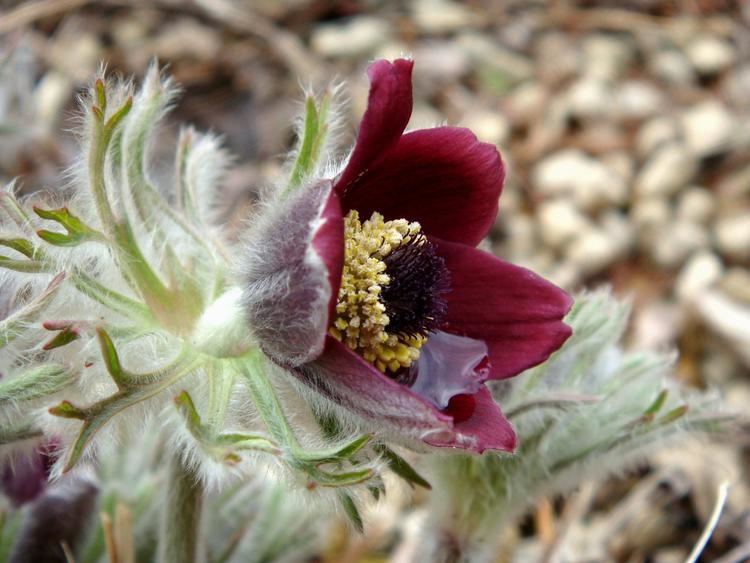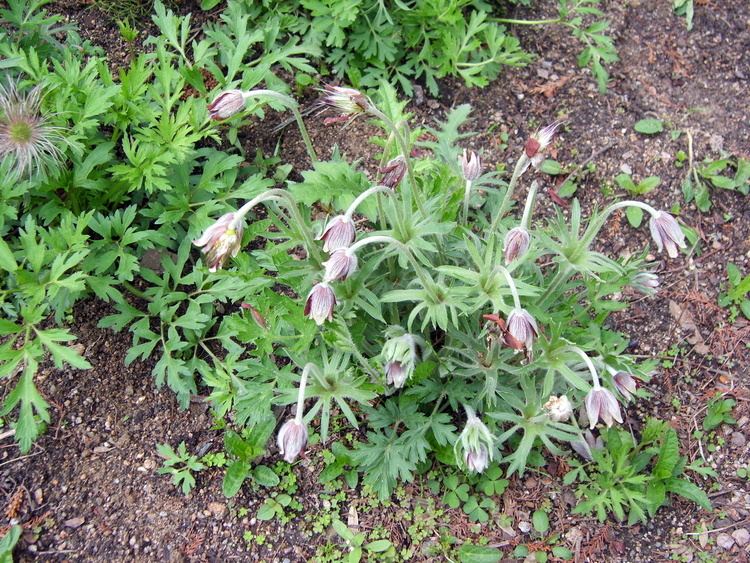Kingdom Plantae Rank Species | Scientific name Pulsatilla koreana | |
 | ||
Similar Usnea barbata, Pasqueflower, Mukdenia rossii, Ixeridium dentatum, Allium monanthum | ||
pulsatilla koreana
Pulsatilla koreana, the Korean pasque flower (Korean Hal-mi-kkot, 할미꽃), is one species of the genus Pulsatilla. P. koreana is a hairy, tufted, perennial herb. It is a native perennial plant growing in Korea and used as a traditional Korean herbal medicine.
Contents

Description

Pulsatilla koreana has 6 petal-like segments that have a silky exterior; stamens in a central boss are surrounded by a ring of staminoids. Leaves are long (3–4 cm long and two- to three-lobed) and pinnate in a basal rosette, and there are five leaflets which are white-woolly pubescent (covered with erect hairs) beneath. The plant has bell-shaped flowers with scapose and pendent, blooming in spring. The flowers are hermaphrodite (have both male and female organs) and are pollinated by insects. They are solitary terminal on a peduncle of 30–40 cm length. The flower is about 35 mm long, 12 mm across, and its color is usually red to purple. Fruit is borne in heads with long feather styles.
Distribution and cultivation

Pulsatilla koreana is a native perennial plant growing in Korea. It can be found in China too; on the border between China and North Korea. According to its native range, it is likely to succeed outdoors in most areas of the country. The following notes are based on the general needs of the genus Pulsatilla. The plant requires a well drained humus rich gritty soil and a sunny position. It also tolerates acid, neutral and basic (alkaline) soils and can grow in very alkaline soil. The plant prefers light (sandy) and medium (loamy) soils. It cannot grow in the shade and requires moist soil. It is a large plant that has a deep woody rootstock and transplant badly and a greedy plant, inhibiting the growth of nearby plants, especially legumes.
Medicinal uses

Pulsatilla koreana is a traditional Korean herbal medicine. The rhizomes of. P. koreana have been used as a traditional Korean medicine for amoebic dysentery, malaria, epistaxis, leucorrhoea, scrofula, internal hemorrhoids and also as a contraceptive. The root is antiinflammatory and antiparasitic. It contains several medically active constituents including saponins and anemonin. There are 17 saponins, two of which, derived from the saponin hederagenin, were found to be potent anti-tumor agents. Anemonin has been shown to have both cardiotoxic and cardiotonic properties.
Fairy tale

Pulsatilla koreana is called the "grandmother flower" in Korea. A long time ago, according to a fairy tale, there was a widow who had two daughters. The older daughter married a rich man but the younger daughter married a man who wasn’t as luxurious. Time passed and the widow was now very old and she decided to visit her two daughters. However the older one refused to let her stay and she was forced out of the house. So the widow turned to her younger daughter. But she lived very far away over many mountains. The widow fainted while going over the mountain from exhaustion. Some hours later, the younger daughter found her mother but it was already too late and she ended up dying. The younger daughter was extremely sad and buried her near the house. The next spring, a flower bloomed over her grave. The flower was bent like her mother’s back. So the daughter believed her mother had come back as the "grandmother flower".



